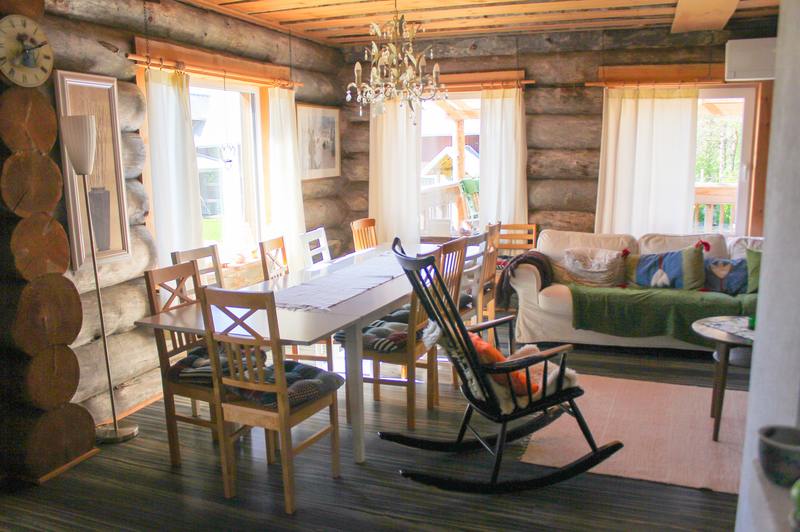Making the best-suited runners for your rocking chair is tricky, so here’s how to make rocking chair runners in four DIY steps that you can easily do.

Making Your Own Rocking Chair Runners
Rocking chairs won’t “rock” without runners, so without further ado, here’s how you make runners for your rocker:
Step #1. Preparation
This process is crucial to your work. Having prepared the equipment that you will use, use your workspace, and the materials you need will save you time and stress for your work.
Because we will be working with wood, make sure to select the best of the best quality. The quality of wood will determine the lifetime and the process that you will employ to accomplish your task. Even minor defects will significantly affect the overall performance of your rocker later on.
You also need to note that the rocking chair runner will be constantly subjected to stress. We extremely recommend using sturdy wood for this project.
Step #2. Fitting
To create a comfortable rocking chair, everything must be measured and fitted correctly. There are quite a few things to consider in fitting; the size of the arc, the length and shape of backends, and the balance.
For the size of the arc, which determines the momentum, the rocking chair would be rocking. If you want a flat runner which rocks quickly, a long curvature radius is suitable for you. If a slow and steady motion is the one you require, a runner with a short and deep curvature is the one you are looking for.
The next aspect is the shape and the length of the backends. The backend’s length and shape will determine the gratefulness of the rocking chair. Lengthy backends will provide slower momentum of rocking than a shorter backend would have.
Another aspect of the backends is the shape. When making the backend, try to recurve the backend slightly, pointing towards the ground.
This will help you retain the balance for your rocking chair and avoid tipping backward. The recurving would provide a limit on how much the rocking chair can tilt back.
The last part is the balance. This is very important for it determines the overall comfortability of the rocking chair. The balance will determine the motion of the rocking chair, whether it halts abruptly or has a continuous rocking motion.
These three aspects are crucial to take note of when taking a fitting for your runners. So measure appropriately and fit them nicely to your rocker.
Step #3. Cutting process
Now that you have finished taking your measurements and fittings now it’s time to create your rocker. Cut your wood according to your measurement and desired fit.
When doing trims and cuts, do it little by little and give yourself some space to work on. As you approach the final cuts, remember to check if the runners are appropriate to your chair fitting.
You can do this using manual saw work or use industrial power saws if available. Just remember to properly equip yourself with safety equipment and exercise caution when working.
Step #4. Finishing
The final step you need after making your runners is to finish up. Sanding and application of protective coatings.
After cutting the pieces, you must now smoothen and refine your newly constructed runner. Take sandpaper and do a fine sanding for the runners to remove excess materials and fragments.
The sanding process will make your runners look neat and smooth. The next is to apply your protective coating.
There are quite a few things to note before applying your coating; the place you will be placing the rocking chair and the surface. Apply your coating tailored to your desire and use it to ensure longevity and the aesthetic aspect of the material.
How to attach runners to a rocking chair
To attach the runners to your rocking chair first, you must have the right tools for the job. You’re going to need a hammer; use a rubber mallet if available to avoid damaging your runners, some nails, and glue if you ever want to.
When attaching the runners, line the runner hole to the chair’s legs. There are times that the holes and the legs might not align perfectly.
When this happens, use your mallet and gently tap the portion of the chair to fit the hole. After attaching, nail the runner from the inside of the leg firmly. Do this for the rest of the chair legs.
How to replace rocking chair runners
If you want to replace the runner of your rocking chair because of damage or because it does not suit you, just follow the original runner’s hole positioning. Align your new runner to your rocking chair’s old runner and mark the areas where the holes are located.
After marking, drill the holes and place them on your rocking chair and nail them firmly. And there you go, you successfully changed your chair’s runners.
Conclusion
Learning how to make a rocking chair runner is beneficial, especially if you are really interested in the field of carpentry. The rocking chair runner defines it and separates it from the rest; that’s why it’s essential to do it nice and proper.
